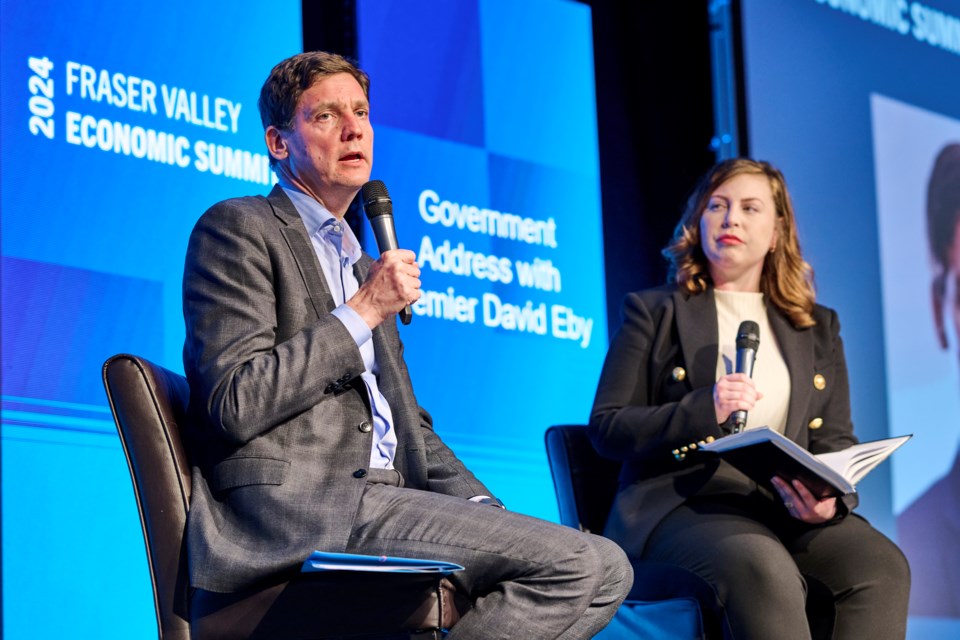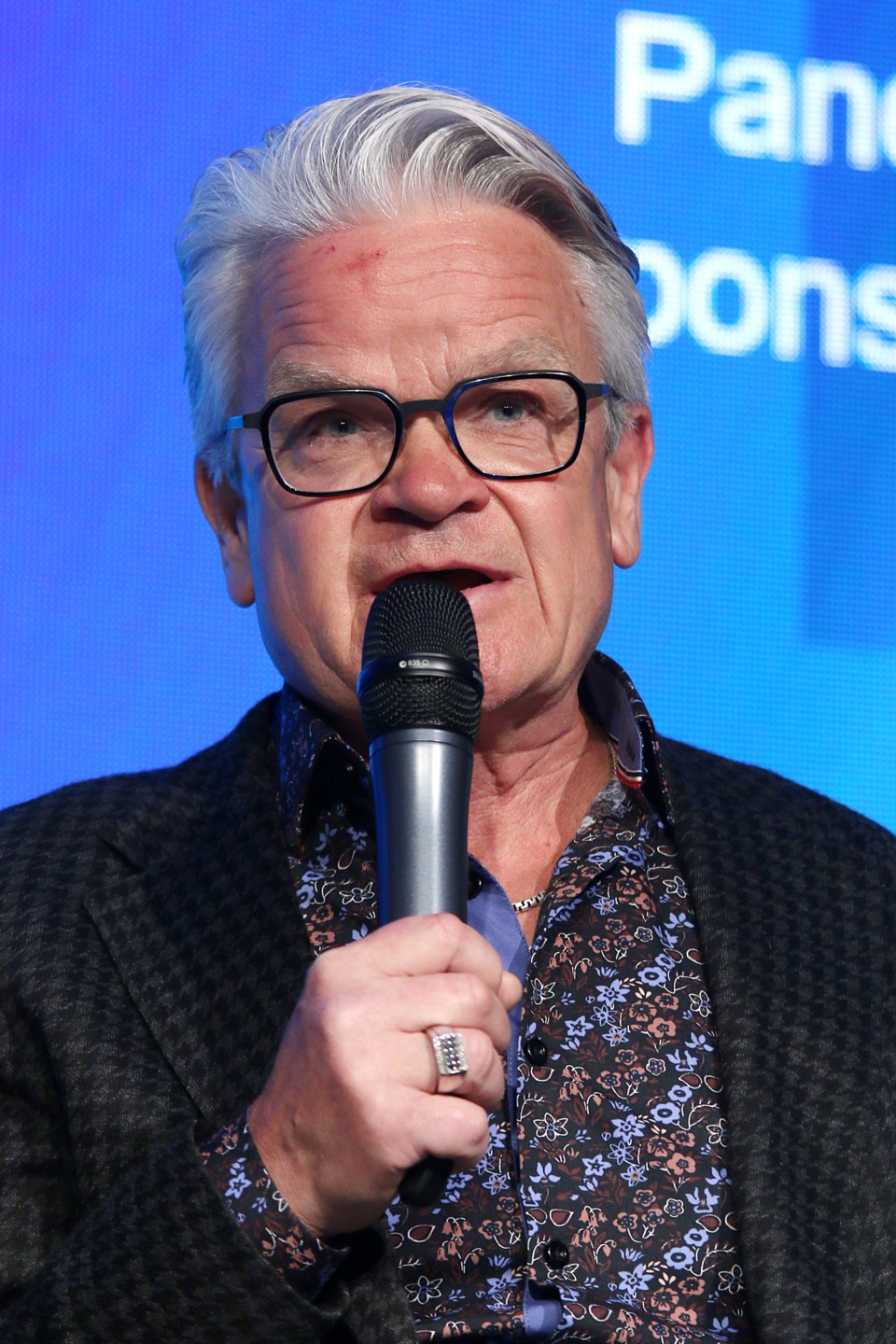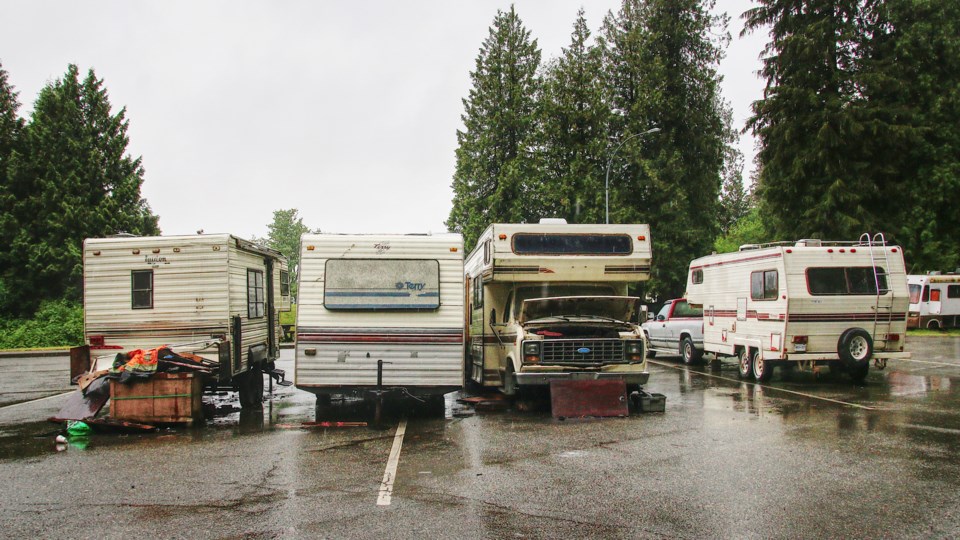Optimism that Fraser Valley businesses are getting their message across to various levels of government is rising among advocates asking for collaboration to improve the region’s economy.
Four local chambers of commerce created the new Fraser Valley Business Coalition in March and hosted the first Fraser Valley Economic Summit in May.
That event drew academics, business leaders, mayors and even Premier David Eby. And it’s success came in part from a newfound openness for communication and sense of common interests, said analyst Don Campbell.
“’There is no them, there’s only us’ is a quote from Bono, and that sentiment really landed with me and this group,” said Campbell, who emceed the event.
“Everybody had been: ‘It’s the government’s fault.’ Or, ‘It’s the university’s fault for not training,’ or ‘It’s the trade schools that are not bringing the right people out,’ or ‘It’s the business owners.’ Everybody has been pointing at each other.”
Given newfound communication among stakeholders, Campbell said he expects the summit could become a valuable regular occurrence.
Many who attended the event agreed that transportation is one of the area’s biggest challenges.
“Highway 1 is really a key issue,” said Abbotsford Chamber of Commerce CEO Alex Mitchell, who chairs the coalition and held a question-and-answer session with Eby at the summit.
She said the B.C. government has outlined when work will take place to widen the highway west of Abbotsford to ease traffic congestion.
“The challenge is that there’s no timeline for highway widening beyond Abbotsford into Chilliwack,” she said. “That’s a big gap.”
Upgrades to interchanges are badly needed, Mitchell said.
Construction is to begin this summer on a new 232nd Street interchange as part of the Fraser Valley Highway 1 Corridor Improvement Program.
The government’s plan is to also widen a 10-kilometre stretch of Highway 1. The wider highway would then accommodate eastbound and westbound high-occupancy-vehicle and electric-vehicle lanes in the road’s median, between the 216th Street and 264th Street interchanges.
Chilliwack Mayor Ken Popove is not holding his breath for highway congestion in his area to ease.
“Quite honestly, that won’t happen in my lifetime,” he said.
He expects highway widening to continue up to Highway 11 in Abbotsford, because he has heard from the provincial government that it needs to do engineering studies of land further east, which was underwater during the devastating 2021 flood.
Workers may need to raise parts of the highway or build aqueducts, he said.
“Unless our neighbour to the south makes some real big changes to the Nooksack River, we’re probably going to experience something like that flooding again,” said Popove.
Indeed, Mitchell listed $1.6 billion in funding from the federal government for flood mitigation as the area’s biggest ask from that government.

Lobbying is ongoing, and there has been some communication, but no actual dollars for flood-mitigation projects yet, she said.
The federal government, in contrast, says that investments from its Disaster Mitigation and Adaptation Fund include $180 million for five major flooding-mitigation projects across the province. About $7.3 million of that is earmarked for Abbotsford.
Abbotsford mayor Ross Siemens earlier this week held a press conference with two other B.C. mayors to urge more action from the federal government.
"We are dumbfounded as to why the federal government has chosen to abandon our communities, our region and our province," he said.
The B.C. government has committed $76.6 million to upgrade Abbotsford's Barrowtown Pump Station.
Including that investment, Victoria is providing nearly $180 million to support Abbotsford’s recovery from the 2021 floods, which cut off parts of the region from the rest of Canada and stymied much goods transportation from the coast into the B.C. Interior.
Exacerbating the transportation challenges is that there is little public transit in cities such as Chilliwack.
Popove told BIV that he has been after the province to pump more money into the partnership between BC Transit and his city, which operates many bus routes.
He wants four more buses—on top of what he estimated to be about 20 buses—to make bus service more frequent and to extend service over more days.
“They’re telling us that there’s no place to park these four buses, and that’s a pile of crap,” he said.
Eby defended his government’s action on transit in the region.
“The work on transit is considerable,” he said. “We have the Surrey-Langley SkyTrain, we have an additional $300 million for BC transit to expand transit connections into those rapid transit points and the expansion of Highway 1 will improve transit as well, because there will be bus-on-shoulder availability as well. So transit will be able to move quite quickly, in ways that it’s not currently able to.”
Efforts underway to create jobs, attract skilled workers
Expanding the region’s business base is impossible without more skilled workers and legal tweaks to enable more businesses to open their doors.
The University of the Fraser Valley (UFV) is bursting at the seams, provost and vice-president academic James Mandigo told BIV. He said the provincial government funds 13,000 domestic-student seats at UFV, and that he would like that funding for 14,500 seats within seven years.
Mandigo said his university is considering conducting community outreach to see if there is sufficient demand for an agriculture-technology MBA program at his university. That would also require more provincial funding, he said.
Gavin Dew, chief strategic officer at the Abbotsford Tech District, supports the idea of such a program at UFV.
His day job is to try to create a 140-acre innovation district in Abbotsford that private developer Auguston Town Development Inc. would build if it can get the City of Abbotsford to rezone what is now residential-zoned land.
“That would allow us to create job uses centred around an innovation hub,” Dew told BIV.
Dew also supports a proposal that many in the area raise: Allowing food-manufacturing industrial businesses to operate on the Agricultural Land Reserve (ALR).
“Sunrise Poultry was kicking our tires a couple of years back because they wanted to amalgamate their processing plants,” said Popove. “All they ran into was roadblocks, and they’re now in Alberta. That’s going to happen more and more if the province doesn’t step up to the plate and make some changes.”
Eby addressed the issue at the economic summit, calling it a “delicate balance.”
He said he wanted to ensure that “any changes that we make don’t impact that affordability piece for farmers. We do want to continue to have food production on the ALR. We don’t want it to be a situation where farmers are priced out.”
His government, he said, has been looking at having “agri-industrial zones.” One example of that, Eby said, was a large industrial park near Chilliwack.
Mitchell said she likes that idea, and has been lobbying to have the province allow a “small” amount of ALR land to be zoned to allow food manufacturing so those businesses do not need to compete for expensive and scarce industrial land.
“We want our region to become a food supercluster,” she said.
Drawing large employers can also require active outreach.
Chilliwack partly funds the private Chilliwack Economic Partners Corp. (CEPCO), which works to foster economic growth and draw businesses to the region.
One of its recent successes was global beverage producer Red Bull last year buying a 15-acre site in Chilliwack and starting construction on a large production facility to meet North American demand, Popove said.
Molson Coors previously spent about $200 million to build a 400,000-square-foot brewery in Chilliwack, which opened in 2019.
Farmers have wide-ranging agricultural concerns
Farmers who dabble in food manufacturing on their land say the rules they must follow should be changed.
Taves Family Farms owner Loren Taves told BIV that he operates a cidery on his property, which also includes 60 acres that he farms and 4.5 acres that is under glass in greenhouses.
ALR rules dictate that when he makes apple juice, half of his fruit input must come from his own farm, Taves said. He can buy the other half of that input from other farms.
He said it would make his operation more efficient if he were able to buy 75 per cent of the input fruit from other farmers, particularly given the high cost of equipment.
Taves’ biggest beef with government, though, is the carbon tax. That controversial levy has galvanized many Canadians to support federal Conservative leader Pierre Poilievre, who has championed axing that tax and has watched his support in opinion polls rise.
Taves estimates that he spends $70,000 per year on the carbon tax for his natural gas. That makes him less competitive compared with American farmers who do not need to pay a carbon tax, he said.
Much of Taves’ produce is sold through Costco in Canada and in the U.S.
His other concern related to energy is that the region’s natural gas infrastructure is not up to snuff.
“We don’t have enough infrastructure to bring natural gas into the Fraser Valley,” he said.
“We have had three interruptions in our gas supply in the last six years. I had to switch my greenhouse over to diesel for three or four days, which cost me probably about $10,000 a day for that diesel, as opposed to about $800 for natural gas.”
The problem with natural-gas infrastructure will only worsen as the population increases, he said.
Popove agreed.

Can the region sustain significant new density?
One of Popove’s bugbears is the B.C. government’s recent move to increase density across the province.
The province mandated that municipalities with 5,000 or more people must update zoning rules to allow for three or four units on a standard residential lot, and up to six units on larger lots near rapid transit.
Popove opposes this change because he said his city does not have the resources to upgrade infrastructure to accommodate this growth. More money is needed for sewers, and daycare businesses would feel the strain, he said.
Scarcity of daycare spaces recently caused a stir in nearby Langley, where council controversially voted to restrict new daycare facilities in the city’s downtown core so there would be more space for retailers.
Eby defended his government’s policy to increase density across the province and said he would not apologize for enacting policies to help create more homes.
Much like in Metro Vancouver, Fraser Valley retailers have had to deal with vandalism and vagrancy.
“The impacts of crime and active drug use are a major issue for our small-business community and retail operators,” Mitchell said.
Popove lamented how few detox centres and beds there are in his community.
Authorities have evacuated the Bradner rest stop in Abbotsford, where dozens of people have been camping and living in trailers in order to make way for a widened highway.

It is not clear where those people will go, but their presence is evidence that homelessness is not only a big-city problem.
Through BC Housing, the B.C. government is funding nearly 200 shelter spaces in Abbotsford.



